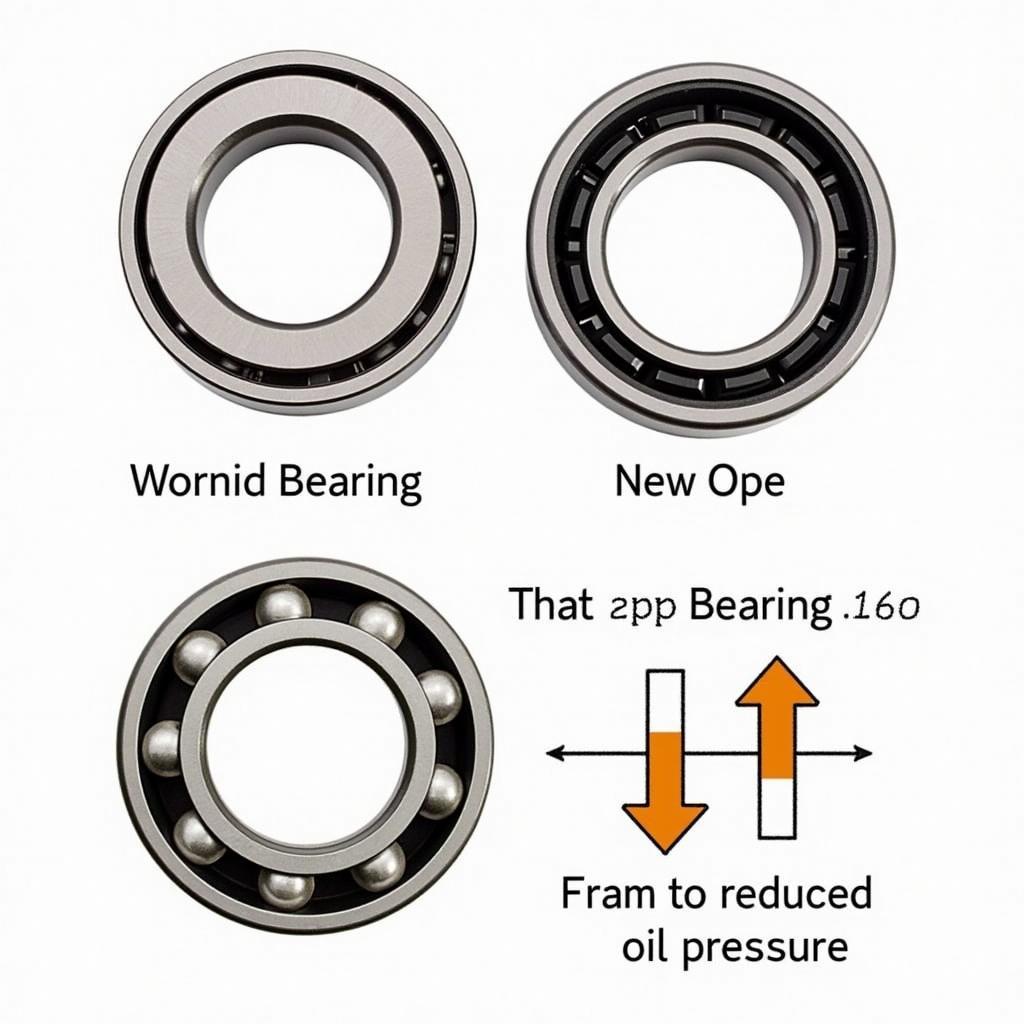Low oil pressure is a serious issue that can lead to catastrophic engine damage if left unaddressed. Understanding how to diagnose and fix this problem is crucial for any car owner. This article will guide you through the steps to troubleshoot and resolve low oil pressure, empowering you to keep your engine running smoothly.
Low oil pressure can be a real headache, but with a bit of know-how, you can diagnose the problem and potentially fix it yourself. Let’s dive into the potential causes and solutions for low oil pressure. how to fix your own car This article will help you understand the intricacies of your vehicle’s oil system.
Understanding Your Car’s Oil System
Your car’s oil system is vital for engine health. It lubricates moving parts, reduces friction, and helps cool the engine. Low oil pressure means these functions are compromised, increasing wear and tear and potentially leading to engine failure.
The oil pump, often driven by the crankshaft, is the heart of the system, pressurizing the oil and circulating it throughout the engine. Understanding how these components interact is crucial for effective troubleshooting.
Common Causes of Low Oil Pressure
Several factors can contribute to low oil pressure. These include low oil level, a faulty oil pump, worn engine bearings, incorrect oil viscosity, a clogged oil filter, or leaks in the oil system.
Low Oil Level: The First Thing to Check
Perhaps the most common cause of low oil pressure is simply a low oil level. Regularly checking your oil level is a simple yet effective preventative measure.
- Check the dipstick: Park your car on a level surface, turn off the engine, and wait a few minutes for the oil to settle. Remove the dipstick, wipe it clean, reinsert it fully, and then remove it again to check the oil level. It should be between the minimum and maximum marks. If it’s low, add oil until it reaches the full mark.
Faulty Oil Pump: The Heart of the Problem
A malfunctioning oil pump can significantly reduce oil pressure. If your oil level is correct and you still have low pressure, the oil pump is a likely culprit.
- Oil pump testing: This may require specialized tools and knowledge. A mechanic can test the oil pump’s pressure to determine if it’s functioning correctly.
Worn Engine Bearings: A Sign of Wear and Tear
Over time, engine bearings can wear down, increasing the clearances and lowering oil pressure. This is often accompanied by knocking sounds from the engine.
- Diagnosing worn bearings: This typically requires a professional mechanic’s diagnosis, often involving listening for specific engine noises and inspecting the bearings.
 Worn engine bearing causing low oil pressure
Worn engine bearing causing low oil pressure
Incorrect Oil Viscosity: Using the Right Oil Matters
Using the wrong oil viscosity can also lead to low oil pressure. Refer to your owner’s manual for the recommended oil viscosity for your specific engine.
- Choosing the right oil: Different engines require different oil viscosities. Using the wrong oil can negatively affect engine performance and oil pressure.
Clogged Oil Filter: Maintaining a Healthy Flow
A clogged oil filter restricts oil flow, reducing oil pressure. Regularly changing your oil filter, as recommended in your owner’s manual, is crucial.
- Oil filter replacement: Changing your oil filter is a relatively simple task that can be done at home with basic tools.
car fix shelby township Get your oil filter changed quickly and efficiently by professionals.
Oil Leaks: Finding the Source
Leaks in the oil system, such as from a cracked oil pan or a leaking gasket, can cause a gradual loss of oil and eventually lead to low oil pressure.
- Inspecting for leaks: Carefully examine your engine and the area underneath your car for signs of oil leaks.
How to Fix Low Oil Pressure: A Step-by-Step Guide
-
Check the oil level: The first step is always to check the oil level and add oil if necessary.
-
Inspect for leaks: Look for any visible signs of oil leaks and address them accordingly.
-
Change the oil and filter: Regular maintenance is crucial. Ensure you’re using the correct oil viscosity.
-
Consult a mechanic: If the problem persists, it’s best to consult a qualified mechanic. They can perform more advanced diagnostics and repairs, such as replacing a faulty oil pump or worn engine bearings.
how much to fix bushings on a car Understanding car repair costs can help you budget effectively.
Conclusion: Keeping Your Engine Healthy
Addressing low oil pressure promptly is essential to prevent costly engine damage. By understanding the potential causes and following the steps outlined in this guide, you can maintain a healthy engine and avoid serious problems down the road. If you’re unsure about any of the steps or the problem persists, contact AutoTipPro at +1 (641) 206-8880 or visit our office at 500 N St Mary’s St, San Antonio, TX 78205, United States for expert assistance. We’re here to help you keep your car running smoothly.
fix my car classic muscle We can help you restore your classic muscle car to its former glory.
car fix auto repair For all your car repair needs, we’re here to help.




Leave a Reply